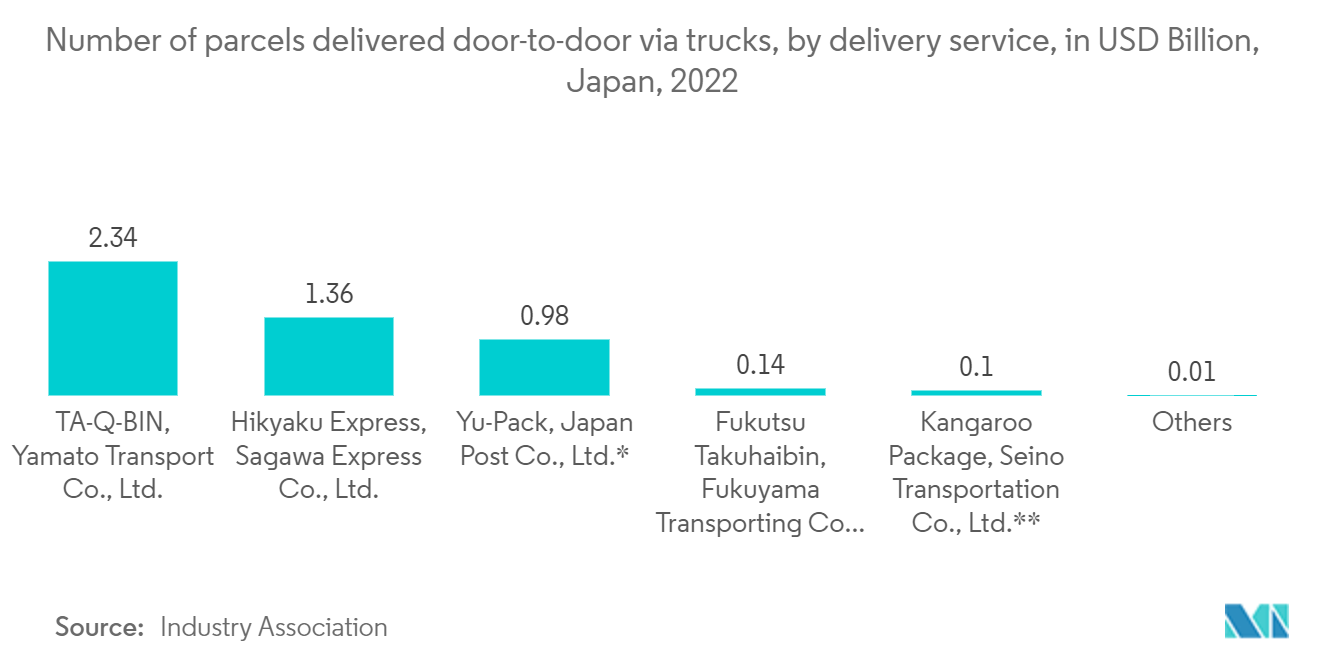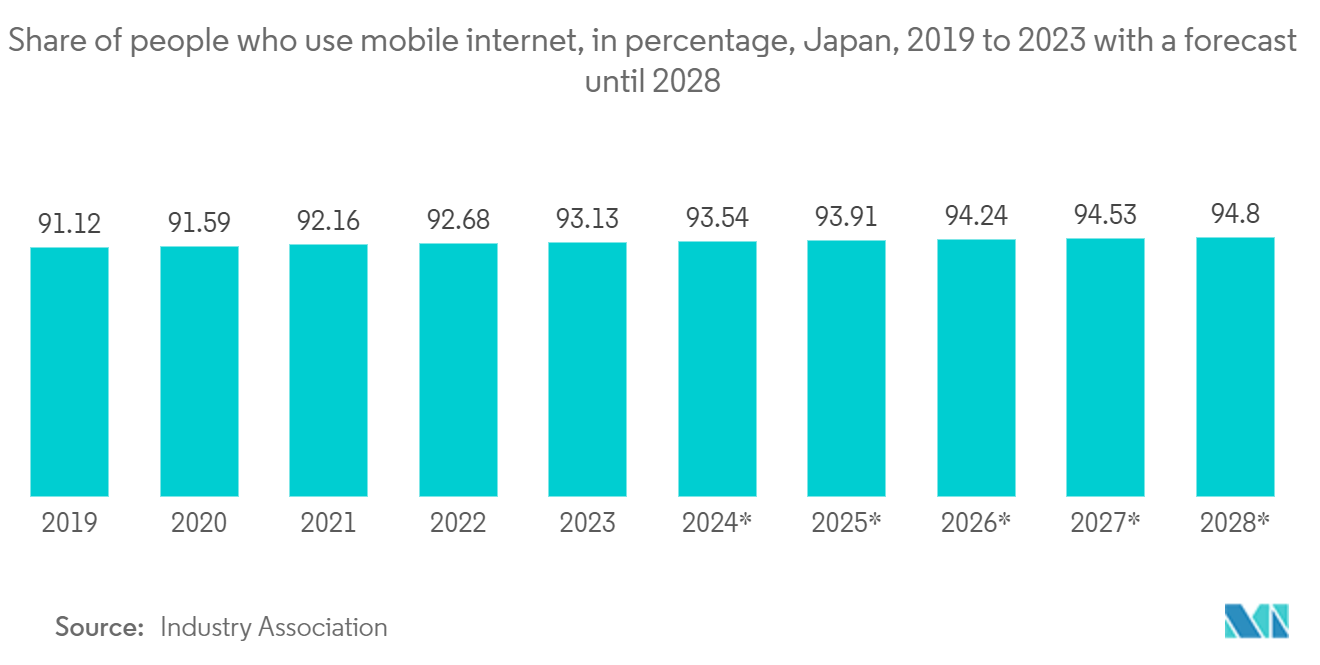Market Trends of Japan E-commerce Logistics Industry
Immense growth projection for transportation segment
In Japan, the transportation segment has seen significant advancements to meet the growing demand of the booming e-commerce market.
Japan's e-commerce transportation segment is dominated by three giant companies that account for more than 90 percent of the domestic parcel delivery market. The biggest one, Yamato Transport, ships more than 1.8 billion parcels annually. A close competitor, Sagawa Express, supplies logistics services to major customers such as Amazon.
One of the key challenges in the transportation segment is the efficient and timely delivery of goods. Logistics companies in a highly populated and geographically diverse country like Japan have had to develop innovative solutions to overcome these challenges. Japan has a population of 122,895,594 as of 2024, according to Worldometer's analysis of the most recent United Nations data.
Japan Post, the country’s third-largest domestic post organization, is likely to follow suit by raising its basic delivery charge and negotiating more competitive rates with key customers. Japan Post has also taken advantage of the domestic shipment management opportunities left by Yamato and Sagawa following the restriction strategy. It has seen tremendous growth in its parcel delivery service, ‘Yupack,’ which was previously available only to enterprise businesses and is now available to private individuals.
However, while the ever-growing demand of nearly 4 billion package deliveries is driving growth in the industry overall, the sheer volume of items that require delivery within Japan is putting pressure on these companies and forcing them all to look for cost savings and process improvements.

High internet and smart phone penetration driving the market
Japan has witnessed remarkable growth in internet and smartphone penetration over the years, making it one of the most connected countries in the world. With its advanced technological infrastructure and tech-savvy population, Japan has embraced the digital revolution with open arms.
Internet penetration in Japan has soared to impressive levels, with a significant portion of the population having access to the internet. As of the latest data, the internet penetration rate in Japan stands at around 93.13%. This means that majority of the Japanese citizens can connect to the internet and enjoy its vast array of services and opportunities.
Japan had 92.9 million active social media users at the beginning of 2023, making up 74.4% of the country's population. At the start of 2023, there were 184.4m cellular mobile connections in the country, making up 149.1% of the population.
One of the driving forces behind Japan's high internet penetration is its robust telecommunications infrastructure. The country boasts a well-developed network of fiber-optic cables, providing high-speed and reliable internet connections to both urban and rural areas. This extensive network ensures that people across the country can access the internet wit ease.
The rise in ecommerce in Japan has led to an increased demand for effcient and reliable logistics services. As more and more people turn to online shopping, the need for seamless delivery and fulfillment becomes crucial. This has paved the way for the evlution of the ecommerce logistics market in Japan.


